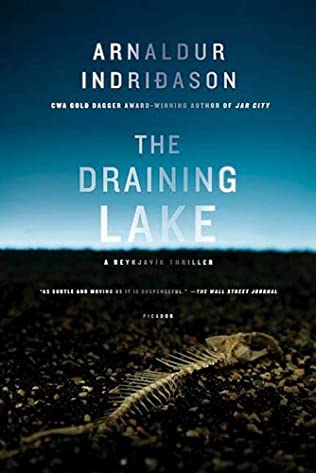One of my favorite parts of these mystery novels, and really the only reason I started reading them, is that Iceland itself is always essential to the plot. I am not normally a huge fan of mysteries, but set them in Iceland — a country I visited once but mentally never left — and I am hooked. Whether it be Iceland’s unique history as a former Danish territory, its relatively recent independence and modernization, its rugged and sparsely populated countryside, its harsh near-arctic climate, its epic geology and natural features, or any other aspect of this volcanic island in the north Atlantic, these stories really could not take place anywhere else.
In The Draining Lake, a human skeleton is discovered in a lake outside of Reykjavik. The lake, called Kleifarvatn, has been gradually losing water due to a sub-surface fissure opened by an earthquake in the year 2000. The receding shoreline exposes the human remains which, forensics determines, date to the 1970s. The detectives don’t have much to go on except an unusual communications device of Russian make tethered to the body that was apparently used to weigh it down.
What follows is a mystery revealed slowly by way of flashbacks alternating with present-day scenes of Erlendur and partners Elinborg and Sigurdur Oli piecing clues together with hard-nosed detective work. Erlendur is as stubborn as ever, and once again his relentless nature is instrumental is solving the case. If he picks up a thread, however seemingly inconsequential, he follows it until he knows exactly where it leads. In The Draining Lake, Erlendur’s dogged determination is contrasted with the sloppy work of a fellow detective named Niels, who had an opportunity years earlier to solve a possibly related case but was too eager to accept a simplistic explanation. Erlendur, of course, is the anti-Niels, which makes for a gripping story.
What sets this book apart from previous installments is the attention given to Erlendur’s character development. We learn more about his past, including the childhood trauma that haunts him. We learn what has become of his troubled daughter, Eva Lind, who figured heavily into previous books, and finally meet his estranged son, Sindri. We see his partners’ obvious care for him, even though they do not fully understand the man. And we see a slight softening of Erlendur, a re-engagement with his relationships in the here-and-now, and a tacit admission that while he was shaped by his past, he need not be defined by it.
